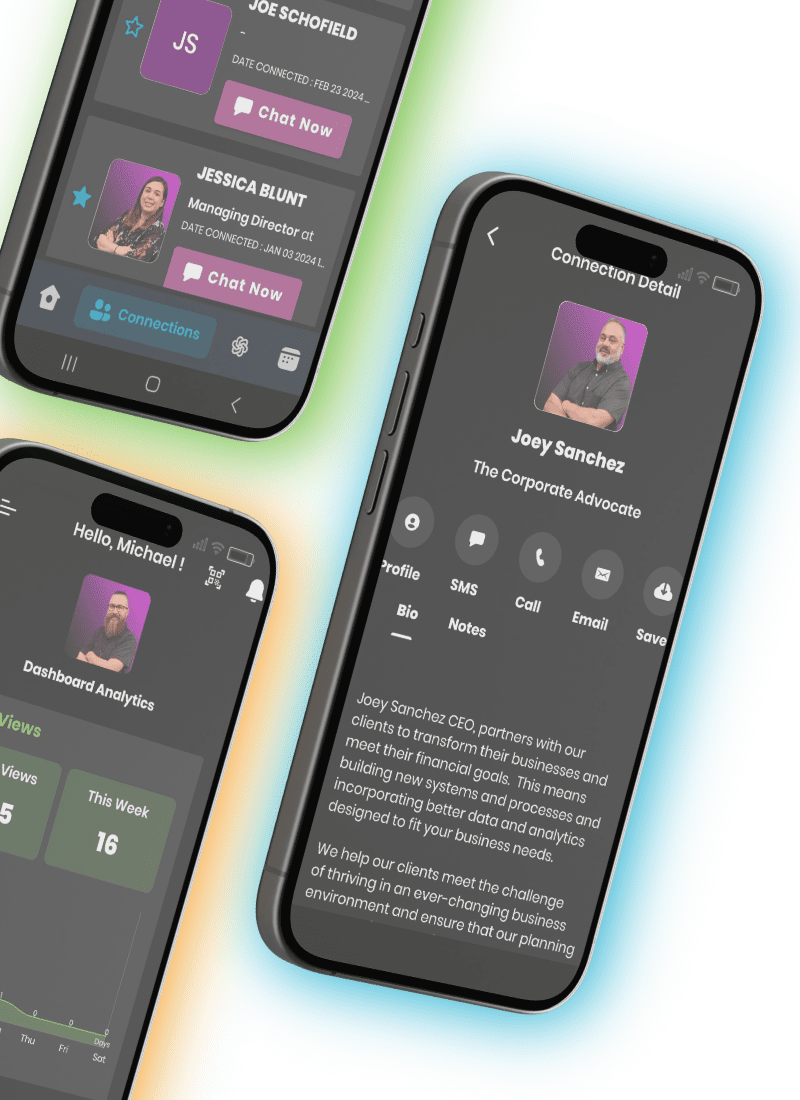In the fast-paced world of professional networking, first impressions can make or break opportunities. Whether you’re at a bustling industry conference, a casual networking event, or even in an actual elevator, the ability to concisely and compellingly introduce yourself and your value proposition is an invaluable skill. This is where the art of the elevator pitch comes into play.
An elevator pitch is a brief, persuasive speech that you use to spark interest in what you do. It should be short enough to deliver during a brief elevator ride, typically lasting no more than 30 seconds to a minute. But don’t let its brevity fool you – a well-crafted elevator pitch can be the key that unlocks doors to new opportunities, collaborations, and professional relationships.
In today’s competitive professional landscape, where attention spans are short and opportunities can be fleeting, mastering your elevator pitch is not just a nice-to-have skill – it’s a crucial component of networking success. A compelling elevator pitch can help you:
- Make a memorable first impression in professional settings
- Clearly communicate your unique value proposition
- Spark interest and open doors for further conversation
- Adapt quickly to various networking scenarios
Throughout this guide, we’ll explore the art and science of crafting an effective elevator pitch. From understanding its core elements to tailoring it for different situations, we’ll provide you with the tools and strategies you need to create a pitch that resonates with your audience and reflects your professional brand.
Whether you’re a seasoned professional looking to refine your approach or a newcomer to the networking scene, this comprehensive guide will help you develop an elevator pitch that not only captures attention but also leaves a lasting, positive impression. Let’s embark on this journey to elevate your networking game and unlock the power of a perfectly crafted elevator pitch.
Understanding the Purpose of an Elevator Pitch
An elevator pitch is more than just a quick introduction; it’s a strategic tool designed to achieve specific goals in your professional interactions. By understanding its core purposes, you can craft a pitch that not only introduces you but also creates meaningful opportunities.
Capturing Attention Quickly
In a world of constant distractions and information overload, your elevator pitch needs to grab attention from the very first words:
- Start with a hook that piques curiosity or addresses a common pain point in your industry.
- Use concise, impactful language that conveys energy and enthusiasm.
- Incorporate a surprising fact or statistic relevant to your field or expertise.
- Consider opening with a thought-provoking question that resonates with your audience.
Communicating Your Value Proposition
The heart of your elevator pitch lies in clearly articulating what makes you unique and valuable:
- Clearly state what you do and who you help in a way that highlights your expertise.
- Focus on the benefits and results you bring, not just your job title or company name.
- Use specific examples or metrics to illustrate your impact.
- Align your value proposition with the needs and interests of your target audience.
Opening Doors for Further Conversation
A successful elevator pitch should serve as a conversation starter, not a monologue:
- End your pitch with an open-ended question or statement that invites dialogue.
- Include a brief mention of a current project or goal that could lead to further discussion.
- Show genuine interest in the other person’s work or perspective.
- Be prepared with follow-up talking points that can deepen the conversation.
Adapting to Various Professional Scenarios
Flexibility is key in making your elevator pitch effective across different settings:
- Develop variations of your pitch for different contexts (e.g., industry events, job interviews, casual networking).
- Practice adjusting the length of your pitch, from a 10-second version to a more detailed 60-second one.
- Tailor your language and focus based on your audience’s background and interests.
- Be ready to emphasize different aspects of your expertise depending on the situation.
By mastering these core purposes, your elevator pitch becomes more than just a rehearsed speech – it transforms into a dynamic tool that can adapt to any professional scenario. Remember, the goal is not just to talk about yourself, but to create a memorable interaction that leads to meaningful professional connections.
As you craft your elevator pitch, consider how tools like SyncVIP can complement your networking efforts. For instance, you could mention how you use SyncVIP’s profile features to showcase your professional brand and make it easy for new connections to learn more about your work and expertise.
Key Elements of an Effective Elevator Pitch
A powerful elevator pitch is composed of several critical elements that work together to create a compelling and memorable introduction. By incorporating these key components, you can craft a pitch that not only captures attention but also leaves a lasting impression.
Clarity and Conciseness
The essence of an effective elevator pitch lies in its brevity and clarity:
- Aim for a pitch that can be delivered in 30-60 seconds, or roughly 75-150 words.
- Use simple, jargon-free language that anyone can understand, regardless of their industry knowledge.
- Focus on one or two main points rather than trying to cover everything about your professional life.
- Practice your pitch until you can deliver it smoothly and naturally, without hesitation.
Unique Selling Proposition (USP)
Your USP is what sets you apart from others in your field:
- Identify what makes you or your approach unique in your industry or niche.
- Highlight specific skills, experiences, or achievements that demonstrate your exceptional value.
- Frame your USP in terms of the benefits you bring to clients, employers, or collaborators.
- Consider how your unique combination of skills and experiences creates a distinctive professional profile.
Problem-Solving Approach
Demonstrating your ability to solve problems makes your pitch more compelling:
- Identify a common challenge or pain point in your industry that you’re equipped to address.
- Briefly explain how your skills or approach can solve this problem.
- Use a short, relatable example of how you’ve successfully tackled similar issues in the past.
- Frame your expertise in terms of the solutions you provide, not just the services you offer.
Call to Action or Next Steps
End your pitch with a clear direction for continuing the conversation:
- Include a specific, actionable next step that’s appropriate for the context (e.g., exchanging contact information, scheduling a follow-up meeting).
- Phrase your call to action as an invitation rather than a demand.
- Be prepared with a digital method for quick contact exchange, such as a QR code linked to your SyncVIP profile.
- Offer something of value, like a relevant resource or introduction, to incentivize further interaction.
By carefully crafting each of these elements, you create an elevator pitch that’s not only informative but also engaging and action-oriented. Remember, your pitch should evolve as your career progresses and as you encounter different networking situations.
To keep your elevator pitch current and easily accessible, consider using SyncVIP’s profile features to maintain an up-to-date digital version. This way, you can quickly share your pitch or expand on it with additional information when you make new connections at networking events or online.
Step-by-Step Guide to Crafting Your Elevator Pitch
Creating an effective elevator pitch is a process that requires thoughtful consideration and practice. Follow this step-by-step guide to develop a pitch that resonates with your audience and effectively communicates your professional value.
Identifying Your Target Audience
Before crafting your pitch, it’s crucial to understand who you’re speaking to:
- Research the typical backgrounds and interests of people you’re likely to encounter in your networking situations.
- Consider the pain points and challenges your target audience faces in their professional lives.
- Tailor your language and focus to resonate with your audience’s perspective and needs.
- Create different versions of your pitch for various audience segments (e.g., potential clients, employers, collaborators).
Defining Your Professional Goals
Clarity about your objectives will shape the content and tone of your pitch:
- Identify short-term and long-term career goals that your elevator pitch can help you achieve.
- Determine what specific outcomes you want from your networking interactions (e.g., job opportunities, partnerships, mentorship).
- Align your pitch with your personal brand and the professional image you want to project.
- Consider how your goals can provide value to your audience, creating a win-win proposition.
Highlighting Your Key Skills and Experiences
Select the most relevant and impressive aspects of your professional background:
- List your top skills, achievements, and experiences that align with your goals and audience needs.
- Choose 2-3 key points that best demonstrate your unique value proposition.
- Frame your skills in terms of results and benefits rather than just listing them.
- Include any notable credentials, awards, or recognitions that add credibility to your pitch.
Structuring Your Pitch (Hook, Body, Conclusion)
Organize your pitch for maximum impact:
- Hook: Start with an attention-grabbing statement or question that piques interest.
- Body: Briefly explain what you do, your unique approach, and the value you provide.
- Conclusion: End with a call to action or an open-ended statement that invites further conversation.
- Ensure a smooth flow between these elements, creating a cohesive narrative.
Incorporating a Memorable Anecdote or Statistic
Add a unique element that makes your pitch stand out:
- Choose a brief, relevant anecdote that illustrates your problem-solving skills or the impact of your work.
- Alternatively, use a surprising statistic or fact related to your industry or achievements.
- Ensure this element reinforces your main message and doesn’t distract from your core pitch.
- Practice incorporating this element naturally into your pitch so it doesn’t feel forced.
As you work through these steps, remember that your elevator pitch is a living document. It should evolve as your career progresses and as you gain insights from each networking interaction. Consider using SyncVIP’s profile features to store different versions of your pitch, making it easy to access and update as needed.
By following this guide, you’ll create an elevator pitch that not only introduces you effectively but also engages your audience and opens doors to valuable professional opportunities. Remember, the key is to be authentic, concise, and focused on providing value to your listeners.
Tailoring Your Pitch for Different Situations
A truly effective elevator pitch is versatile, adapting to various professional scenarios while maintaining its core message. By tailoring your pitch to specific situations, you can maximize its impact and relevance. Let’s explore how to adjust your pitch for different contexts.
Networking Events and Conferences
In these bustling environments, your pitch needs to be concise and memorable:
- Start with a brief, attention-grabbing introduction that’s relevant to the event’s theme.
- Focus on aspects of your work that align with the conference topics or industry trends.
- Be prepared to expand on certain points if the conversation allows.
- Include a specific reason why you’re attending the event to create common ground.
- Have a digital business card or SyncVIP profile link ready for easy follow-up.
Job Interviews
When pitching to potential employers, emphasize your value to their organization:
- Research the company beforehand and tailor your pitch to address their specific needs or challenges.
- Highlight experiences and skills that directly relate to the position you’re applying for.
- Include a brief statement about why you’re interested in this particular role and company.
- Be prepared to back up your claims with specific examples from your work history.
- End with a question about the role or company to demonstrate your genuine interest.
Social Media Profiles
Your online pitch needs to be concise and visually appealing:
- Craft a short, impactful bio that captures the essence of your professional brand.
- Use keywords relevant to your industry to improve discoverability.
- Include a call-to-action, such as inviting connections or directing visitors to your website.
- Utilize SyncVIP’s profile features to create a comprehensive digital representation of your pitch.
- Ensure consistency across different platforms while tailoring the tone to each platform’s style.
Email Introductions
When introducing yourself via email, your pitch should be clear and prompt a response:
- Begin with a personalized greeting and explain how you got the recipient’s contact.
- Keep your pitch concise, focusing on why you’re reaching out and the value you can offer.
- Clearly state what you’re hoping to achieve from the interaction (e.g., advice, collaboration, informational interview).
- Include links to your professional profiles or portfolio for additional information.
- End with a specific request or question to encourage a reply.
Remember, while the core elements of your pitch remain constant, the emphasis and delivery should shift based on your audience and the context. Practice adapting your pitch for these different scenarios, and don’t be afraid to ask for feedback from colleagues or mentors.
By mastering the art of tailoring your elevator pitch, you’ll be well-equipped to make meaningful connections in any professional setting. Whether you’re networking at a conference, interviewing for a dream job, or reaching out to a potential mentor, your adaptable pitch will help you make a strong, lasting impression.
Delivery Techniques for Maximum Impact
Crafting a compelling elevator pitch is only half the battle; delivering it effectively is equally crucial. The way you present your pitch can significantly influence its impact and the impression you leave. Let’s explore key techniques to ensure your elevator pitch resonates with your audience.
Body Language and Non-Verbal Communication
Your non-verbal cues can reinforce or undermine your message:
- Stand or sit with good posture to project confidence and engagement.
- Use open gestures to appear approachable and emphasize key points.
- Smile genuinely to create a positive and welcoming impression.
- Mirror the body language of your listener subtly to build rapport.
- Avoid fidgeting or nervous habits that might distract from your message.
Tone of Voice and Pacing
How you speak is as important as what you say:
- Speak clearly and at a moderate pace to ensure your message is understood.
- Vary your tone to add emphasis and maintain interest.
- Use pauses strategically to allow key points to sink in and give your listener time to process.
- Adjust your volume based on the environment, ensuring you’re heard without shouting.
- Infuse enthusiasm into your voice to convey passion for your work.
Maintaining Eye Contact
Effective eye contact builds trust and shows confidence:
- Make consistent eye contact throughout your pitch, but avoid staring.
- In group settings, make eye contact with each person for a few seconds at a time.
- If you’re nervous, try focusing on the bridge of the listener’s nose as an alternative.
- Use eye contact to gauge your listener’s interest and adjust your pitch accordingly.
- Remember to blink naturally to avoid appearing intense or uncomfortable.
Practicing Active Listening for Follow-Up Opportunities
Effective pitching is a two-way street:
- Pay close attention to your listener’s reactions and verbal responses.
- Look for cues that indicate interest in specific aspects of your pitch.
- Be prepared to pause your pitch if the listener wants to ask a question or make a comment.
- Use the information you gather through listening to tailor the rest of your conversation.
- Demonstrate your attentiveness by referencing points your listener has made.
Remember, practice is key to mastering these delivery techniques. Consider recording yourself delivering your pitch or practicing with a trusted colleague for feedback. You can also use SyncVIP’s networking features to set up practice sessions with other professionals in your field.
By honing these delivery skills, you’ll ensure that your elevator pitch not only sounds good on paper but also makes a powerful impact in real-world situations. A well-delivered pitch can turn a brief encounter into a meaningful professional connection, opening doors to new opportunities and collaborations.
Common Pitfalls to Avoid
Even with careful preparation, it’s easy to fall into common traps when crafting and delivering your elevator pitch. Being aware of these pitfalls can help you refine your approach and ensure your pitch remains effective. Let’s explore some frequent mistakes and how to avoid them.
Being Too Generic or Vague
A pitch that could apply to anyone in your field fails to showcase your unique value:
- Avoid generic statements like “I’m a hard worker” or “I’m passionate about my field.”
- Instead, provide specific examples that illustrate your unique approach or achievements.
- Use concrete language that paints a clear picture of your role and impact.
- Tailor your pitch to your audience, highlighting aspects that are most relevant to them.
- Utilize SyncVIP’s profile customization features to create targeted versions of your pitch for different audiences.
Overloading with Information
Trying to cram too much into your pitch can overwhelm your listener:
- Stick to 2-3 key points that best represent your professional value.
- Resist the urge to list all your accomplishments or skills.
- Focus on quality over quantity – choose your most impressive or relevant points.
- Be prepared to elaborate on specific points if asked, rather than including everything upfront.
- Practice trimming your pitch to its essential elements without losing its impact.
Sounding Rehearsed or Inauthentic
While preparation is crucial, your pitch should feel natural and conversational:
- Avoid memorizing your pitch word-for-word; instead, internalize key points and speak naturally.
- Use language that feels comfortable and authentic to you.
- Allow for slight variations in your delivery to keep it fresh and adapted to each situation.
- Incorporate your personality into your pitch to make it more engaging and memorable.
- Practice delivering your pitch in a conversational tone, as if you’re talking to a friend.
Neglecting to Update Your Pitch Regularly
An outdated pitch can miss opportunities to showcase your latest achievements:
- Review and update your pitch regularly, especially after significant career milestones or changes.
- Incorporate new skills, experiences, or accomplishments as you gain them.
- Stay informed about industry trends and adjust your pitch to remain relevant.
- Seek feedback from colleagues or mentors to ensure your pitch still resonates.
- Use SyncVIP’s profile updating features to keep your digital pitch current and aligned with your in-person delivery.
By being mindful of these common pitfalls, you can continuously refine your elevator pitch to ensure it remains effective, authentic, and impactful. Remember, your pitch is a living representation of your professional brand – it should evolve as you grow in your career.
Regularly revisiting and refining your pitch not only helps you avoid these pitfalls but also ensures that you’re always putting your best foot forward in professional interactions. With practice and awareness, you can craft a pitch that truly represents your unique value and opens doors to exciting opportunities.
Practicing and Refining Your Elevator Pitch
Creating an effective elevator pitch is an iterative process that requires consistent practice and refinement. By actively working on your pitch, you can ensure it remains polished, authentic, and impactful. Let’s explore various methods to hone your elevator pitch skills.
Role-Playing Exercises
Simulating real-world scenarios can help you prepare for various networking situations:
- Partner with a colleague or friend to practice delivering your pitch in different contexts.
- Create scenarios that mimic networking events, job interviews, or chance encounters.
- Switch roles to gain perspective on how others might perceive your pitch.
- Practice responding to common follow-up questions or objections.
- Use SyncVIP’s networking features to connect with other professionals for virtual role-playing sessions.
Recording and Self-Evaluation
Seeing and hearing yourself can provide valuable insights:
- Record video of yourself delivering your pitch to analyze your body language and tone.
- Make audio recordings to focus on your verbal delivery, pacing, and clarity.
- Watch or listen to your recordings with a critical eye, noting areas for improvement.
- Pay attention to filler words, pauses, and the overall flow of your pitch.
- Use these recordings to track your progress over time as you refine your pitch.
Seeking Feedback from Peers and Mentors
External perspectives can offer invaluable insights:
- Present your pitch to trusted colleagues, mentors, or industry peers.
- Ask for specific, constructive feedback on content, delivery, and overall impact.
- Be open to criticism and use it as an opportunity for growth.
- Consider joining professional groups or networking circles where you can practice and receive feedback.
- Utilize SyncVIP’s community features to connect with mentors or peers who can provide feedback.
A/B Testing Different Versions
Experimenting with variations can help you find the most effective approach:
- Create multiple versions of your pitch, varying elements like the opening hook or key points.
- Test these versions in real networking situations or practice sessions.
- Keep track of which versions receive the most positive responses or lead to further conversations.
- Analyze what makes certain versions more effective and incorporate those elements into your final pitch.
- Use SyncVIP’s profile features to store and organize different versions of your pitch for easy reference and comparison.
Remember, the goal of practicing and refining your elevator pitch is not to achieve perfection, but to develop a natural, confident delivery that authentically represents your professional brand. Each interaction is an opportunity to learn and improve.
As you continue to practice and refine your pitch, you’ll likely find that it becomes more fluid and adaptable to different situations. This process of continuous improvement ensures that your elevator pitch remains a powerful tool in your professional networking arsenal, helping you make meaningful connections and seize new opportunities as they arise.
Leveraging Technology for Elevator Pitch Success
In today’s digital age, technology offers numerous opportunities to enhance and extend the reach of your elevator pitch. By leveraging digital tools and platforms, you can ensure your pitch resonates in both in-person and online networking scenarios. Let’s explore how to use technology to amplify the impact of your elevator pitch.
Using SyncVIP Features to Enhance Your Pitch Delivery
SyncVIP offers several tools that can complement and strengthen your elevator pitch:
- Create a comprehensive professional profile on SyncVIP that aligns with and expands upon your elevator pitch.
- Utilize SyncVIP’s customizable digital business card feature to share your pitch and contact information seamlessly.
- Leverage the platform’s networking recommendations to connect with professionals who align with your pitch’s focus.
- Use SyncVIP’s scheduling tools to easily set up follow-up meetings after delivering your pitch.
- Take advantage of SyncVIP’s analytics to track engagement with your digital pitch and profile.
Creating Video Elevator Pitches for Online Platforms
Video pitches can be powerful tools for online networking and personal branding:
- Record a short (30-60 second) video version of your elevator pitch for use on professional social media platforms.
- Ensure good lighting, clear audio, and a professional background for your video pitch.
- Use visual aids or on-screen text to emphasize key points in your video pitch.
- Create different versions of your video pitch tailored to specific platforms or audiences.
- Consider adding captions to your video for accessibility and for viewers watching without sound.
Incorporating Your Pitch into Your Digital Presence
Integrate elements of your elevator pitch across your online professional profiles:
- Adapt your pitch into a compelling bio for LinkedIn, Twitter, and other professional networks.
- Use key phrases from your pitch in your email signature to reinforce your professional brand.
- Create a dedicated ‘About Me’ page on your personal website that expands on your elevator pitch.
- Incorporate your pitch into your portfolio or work samples to provide context for your projects.
- Use consistent language and messaging across all platforms to strengthen your personal brand.
By effectively leveraging technology, you can extend the reach and impact of your elevator pitch beyond face-to-face interactions. This digital integration ensures that your professional brand is consistently communicated across all touchpoints, whether someone encounters you in person or discovers you online.
Remember, while technology provides powerful tools to enhance your pitch, the core principles of clarity, authenticity, and value proposition remain crucial. Use these digital strategies to amplify your message and create more opportunities for meaningful professional connections.
As you implement these technological enhancements, regularly review and update your digital pitch elements to ensure they remain current and aligned with your career progression. This ongoing refinement will help you maintain a strong, cohesive professional brand across all platforms and interactions.
Measuring the Effectiveness of Your Elevator Pitch
To ensure your elevator pitch is achieving its intended goals, it’s crucial to measure its effectiveness and make data-driven improvements. By tracking key metrics and analyzing responses, you can refine your pitch for maximum impact.
Tracking Engagement and Follow-Ups
Monitor the tangible outcomes of your elevator pitch:
- Keep a log of networking interactions where you’ve used your pitch.
- Record the number of business cards exchanged or contact information shared.
- Track follow-up communications initiated by those you’ve pitched to.
- Monitor invitations for further discussions, meetings, or collaborations.
- Use SyncVIP’s analytics features to measure engagement with your digital pitch and profile.
Analyzing Audience Reactions
Pay close attention to how people respond to your pitch:
- Observe non-verbal cues like body language and facial expressions during in-person pitches.
- Note the types of questions or comments your pitch typically generates.
- Gauge the level of interest and enthusiasm in responses to your pitch.
- Compare reactions to different versions of your pitch to identify the most effective elements.
- For video pitches, analyze viewer retention rates and engagement metrics.
Adjusting Based on Results and Feedback
Use the insights gathered to continuously improve your pitch:
- Identify patterns in successful interactions and emphasize those elements in your pitch.
- Address common questions or concerns proactively in future versions of your pitch.
- Experiment with different openings or closings based on audience reactions.
- Refine your value proposition if you’re not seeing the desired level of engagement.
- Regularly update your pitch to reflect new achievements or shifts in your professional focus.
Remember, the effectiveness of your elevator pitch isn’t just about immediate reactions. Long-term outcomes, such as meaningful professional relationships or career opportunities that develop over time, are also important indicators of success.
Consider creating a simple spreadsheet or using SyncVIP’s tools to systematically track these metrics over time. This data will provide valuable insights into the evolution of your networking effectiveness and help you make informed decisions about how to refine your approach.
By consistently measuring and adjusting your elevator pitch, you ensure that it remains a powerful tool in your professional arsenal, adapting to your growing expertise and changing market demands.
Advanced Techniques for Elevator Pitch Mastery
Once you’ve mastered the basics of crafting and delivering an effective elevator pitch, you can explore advanced techniques to make your pitch truly stand out. These strategies can help you create a more memorable and impactful impression in various professional settings.
Storytelling Elements to Make Your Pitch Memorable
Incorporate narrative techniques to engage your audience:
- Start with a brief, compelling anecdote that illustrates your professional journey or a key achievement.
- Use the classic story structure of setup, conflict, and resolution to frame your professional value proposition.
- Create a ‘hero’s journey’ narrative where you position your skills or services as the solution to industry challenges.
- Include sensory details to make your story more vivid and relatable.
- Practice the art of ‘micro-storytelling’ to convey a complete narrative arc within the confines of a brief pitch.
Using Analogies and Metaphors Effectively
Leverage figurative language to explain complex ideas simply:
- Develop a signature analogy that encapsulates your professional role or approach.
- Use metaphors to create memorable visual representations of abstract concepts in your field.
- Ensure your analogies are relevant and easily understood by your target audience.
- Be prepared to expand on your analogies if they spark interest or questions.
- Test different metaphors to see which resonate most with various professional groups.
Incorporating Humor (When Appropriate)
Tasteful humor can make your pitch more engaging and memorable:
- Use a light-hearted observation or self-deprecating comment to break the ice.
- Incorporate a clever wordplay or pun related to your industry (if it aligns with your personal brand).
- Be mindful of your audience and context – humor should enhance, not detract from your message.
- Practice your delivery to ensure the humor feels natural and not forced.
- Have a non-humorous version of your pitch ready for more formal or serious settings.
Adapting to Cultural Differences in International Settings
Tailor your pitch for global audiences:
- Research cultural norms and business etiquette for the regions you’re targeting.
- Adjust your pitch’s content and delivery style to align with local communication preferences.
- Be aware of idioms or references that may not translate well across cultures.
- Consider creating localized versions of your pitch for key international markets.
- Use SyncVIP’s global networking features to connect with international professionals and practice your adapted pitch.
These advanced techniques can elevate your elevator pitch from good to exceptional. However, it’s crucial to implement them thoughtfully and authentically. Your pitch should still feel natural and align with your personal brand.
Remember, mastering these techniques takes time and practice. Use networking events, professional gatherings, or SyncVIP’s virtual networking opportunities to test and refine these advanced strategies. Pay attention to how different audiences respond and be prepared to adjust your approach accordingly.
By incorporating these advanced elements, you can create a truly memorable elevator pitch that not only communicates your value but also leaves a lasting impression on your professional contacts. This can open doors to unique opportunities and set you apart in competitive professional environments.
Elevating Your Networking Game with Your Perfected Pitch
As we conclude our comprehensive guide to crafting an effective elevator pitch, let’s consolidate the key insights and chart your path forward to networking success.
Recap of Key Points for Creating an Effective Elevator Pitch
Throughout this guide, we’ve covered essential elements of a powerful elevator pitch:
- Clarity and conciseness in communicating your unique value proposition
- Tailoring your pitch to different audiences and situations
- Incorporating storytelling elements and analogies for memorability
- Practicing delivery techniques for maximum impact
- Leveraging technology to enhance your pitch’s reach and effectiveness
- Continuously measuring and refining your pitch based on feedback and results
Remember, an effective elevator pitch is more than just a rehearsed speech; it’s a dynamic tool that opens doors to meaningful professional connections and opportunities.
Encouragement to Continually Refine and Practice Your Pitch
Crafting the perfect elevator pitch is an ongoing process:
- Treat your pitch as a living document that evolves with your career progression
- Regularly update your pitch to reflect new skills, achievements, and professional goals
- Seek feedback from trusted colleagues, mentors, and new connections
- Embrace opportunities to practice your pitch in various professional settings
- Stay open to learning and improving, even as you become more confident in your delivery
Call to Action: Implement Your New Elevator Pitch in Your Next Networking Opportunity
Now that you’re armed with the knowledge and techniques to create a compelling elevator pitch, it’s time to put it into action:
- Finalize your elevator pitch based on the strategies we’ve discussed
- Practice your pitch until you can deliver it naturally and confidently
- Update your SyncVIP profile to align with your new pitch, ensuring consistency across your digital presence
- Identify upcoming networking events or opportunities where you can debut your refined pitch
- Set a goal for meaningful connections you want to make using your new pitch
- After each networking interaction, reflect on the effectiveness of your pitch and make notes for further refinement
Remember, the true power of your elevator pitch lies not just in its content, but in how it enables you to connect authentically with others and create valuable professional relationships.
By implementing your perfected elevator pitch, you’re not just introducing yourself – you’re opening doors to new opportunities, collaborations, and career growth. Embrace each networking opportunity as a chance to showcase your unique value and build meaningful connections in your professional journey.
Your elevator pitch is your gateway to elevating your networking game. So go forth with confidence, armed with your polished pitch, and watch as new doors open in your professional world. The next conversation you have could be the one that transforms your career – make it count with your perfected elevator pitch.















